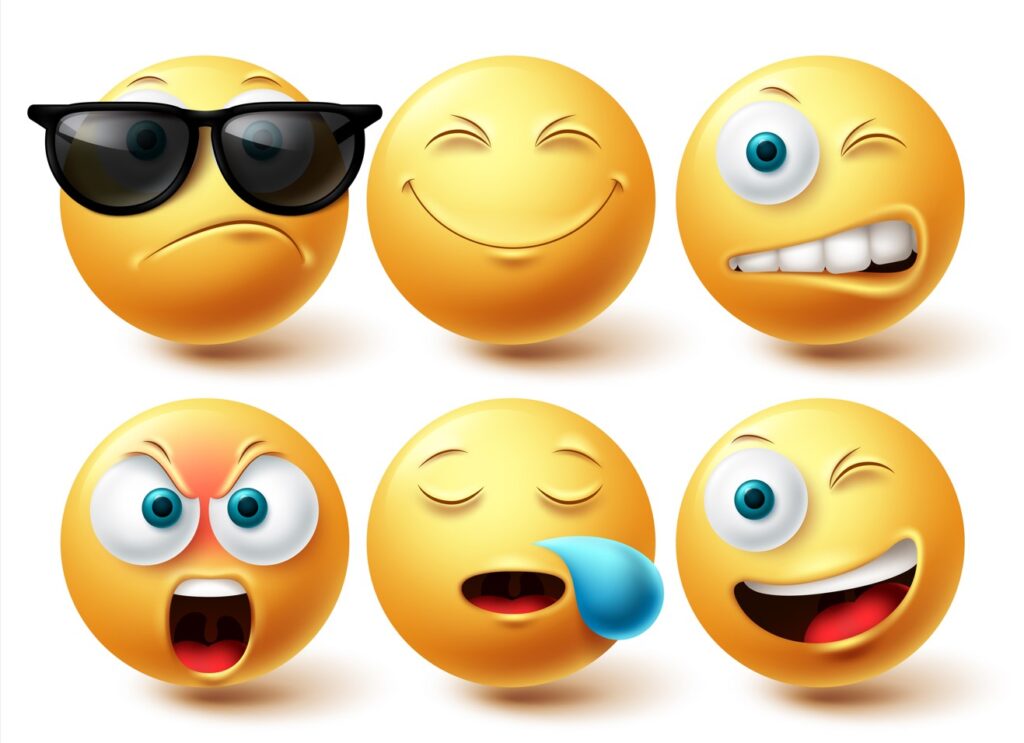Many litigators espouse brevity in communications, recommending that emails be responded to as succinctly and simply as possible. For instance, if an email simply warrants “yes” as a response, renowned mediator and arbitrator Hugh Hackney would respond with “Y”. If an email warrants thanks, he would respond “T”. Brevity in the modern era progressed from abbreviations to the use of the ubiquitous emoji. Just as words, facial expressions and hand gestures are open to more than one interpretation, emojis can also be open to interpretation – and may even warrant use of a communications expert at trial.
Let’s step back just a few years, and consider how emojis have impacted in cases.
In a case of first impression in Australia, in Burrows v. Houda [2020] NSWDC 485 (27 August 2020), the use of emojis was discussed in the context of bringing a defamation lawsuit. The three emojis in question were: 🎆😂👻.
In Israel, “this symbol, 😊, starred in a recent court case, perhaps foreshadowing the future of legal and linguistic interpretation.” The potential renter’s communications included an emoji of a popped champagne bottle and of a dancing woman. Transliterated from the original Hebrew: “Good morning 😊 we want the house💃🏻👯✌️☄️🐿️🍾 just need to go over the details … When suits you?”
In the Israel case, the landlord pulled his ad, based on the foregoing message. The potential tenant then backed away from the deal. The landlord sued the potential tenant in small claims court, asserting that the message constituted a binding offer to rent the apartment, upon which the landlord detrimentally relied. The landlord was unable to rent the premises for two months, and sought damages as a result. The Hon. Amir Weizebbluth ruled that symbols sent by the potential renter to the landlord indicated that they had a deal – but the judge also noted that:
…these symbols transmitting to the opposite side (the plaintiff) because everything is well, were misleading… and those smiley symbols at the end of the negotiations that misled the plaintiff into believing that the defendants were still interested in his apartment support the conclusion that the defendants acted in bad faith in the negotiations . . . in modern times, the use of ‘emoji’ figurines may also have a meaning that indicates the bona fide of the negotiating party. . . defendants, therefore, prevented the plaintiff in bad faith from using a period of about a month to locate an alternative tenant for the apartment. That is, in their conduct and through the assessment, the defendants prevented the plaintiff from renting for about one month.
Judge Weizebbluth ruled that the landlord was entitled to compensation from the potential renters/defendants, ordering an award of approximately $2,500. The defendants erred, in part, by failing to inform their potential landlord that they were uncertain about renting.
The ABA noted in 2020 that the prevalence of the use of emojis “in everyday life means that emojis are going to increasingly impact litigation, particularly where issues within a case turn on the meaning of a particular communication.”
Eric Goldman, a professor at Santa Clara University, tracks cases involving emoticons. Prof. Goldman analyzed 2021 emoticon cases:
Breaking down the 2021 cases by underlying subject matter:
- “Sexual predation” (both solicitations of minors by adults and actual sexual abuse): 21 cases
- Employment discrimination: 19
- Murder: 9 (this is a noticeable increase from past years)
Breaking down the 2021 cases by mode of communication:
- Text messages: 61 (this is a noticeable increase from past years)
- Facebook/Instagram: 35
- Email: 17
Perception and reaction are key components in interpretation. Litigants, litigators, judges, mental health professionals, and jurors all need to be “↑” on the potential meaning of emotions. Will the use of an eggplant emoji constitute proof of adultery in future cases? Will an email or a text exchanged with a business colleague confirming a meeting at a hotel be plumbed for deeper meaning?
In Japan, the symbol for “E” means “images” and “Moji” means “character.” One cannot help but think of the meaning of “voir dire.” Black’s Law Dictionary defines voir dire as “to speak the truth.” In your next case, when confronted with emails and texts that include emojis or emoticons, ask yourself: Do those images speak the truth? Is the truth open to more than one interpretation? How can you use those images against the opposing party? How can your client’s use of emojis be beneficial or detrimental to your case?
It’s a changing world. Emojis and emoticons, like a picture, can speak a thousand words.







